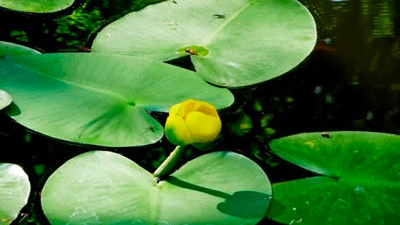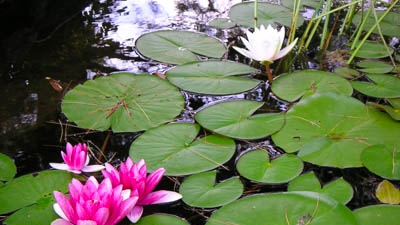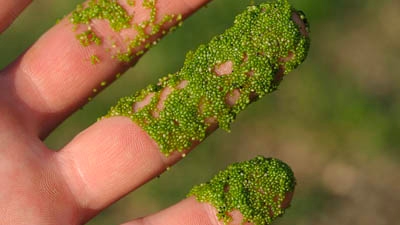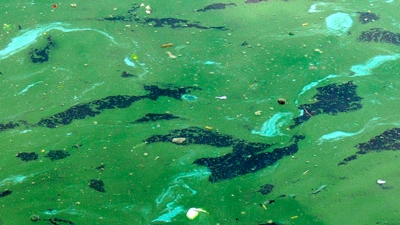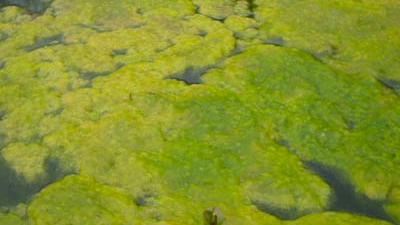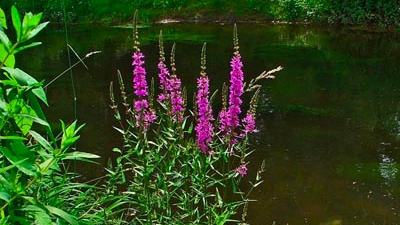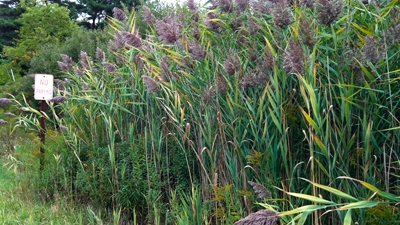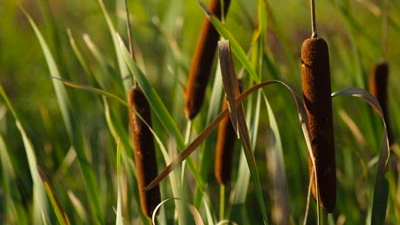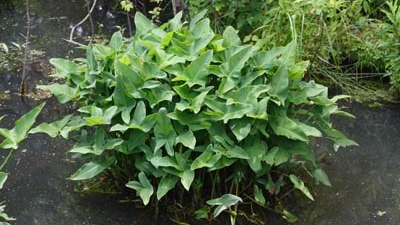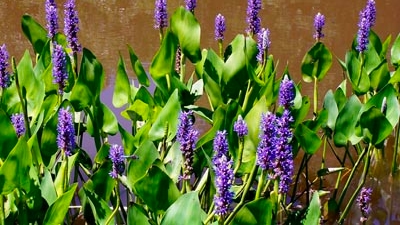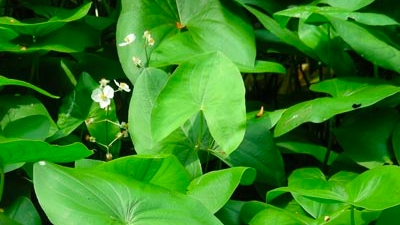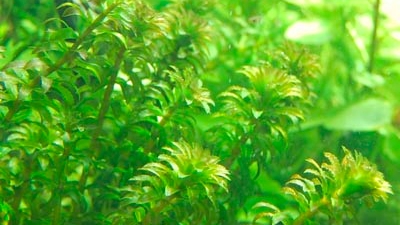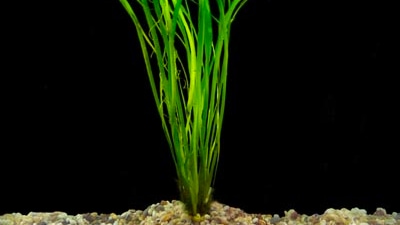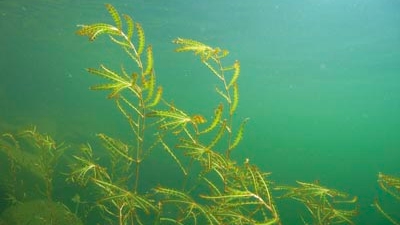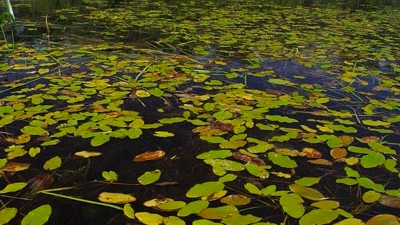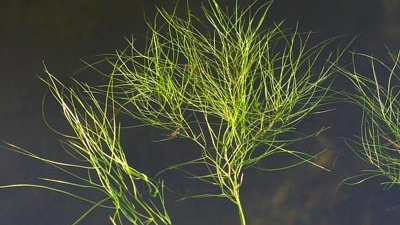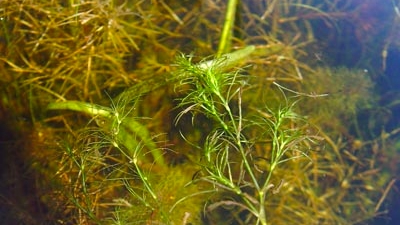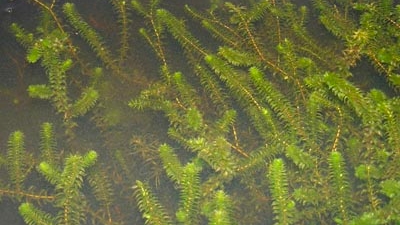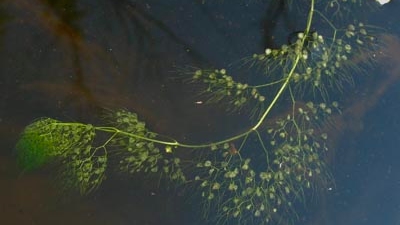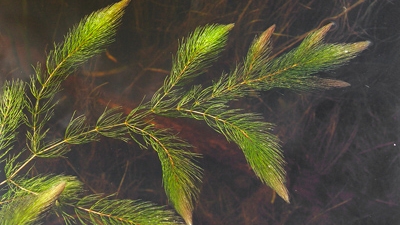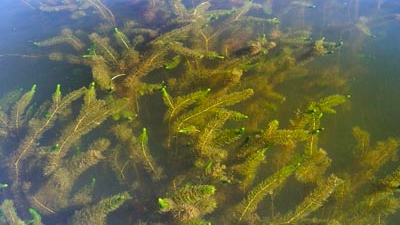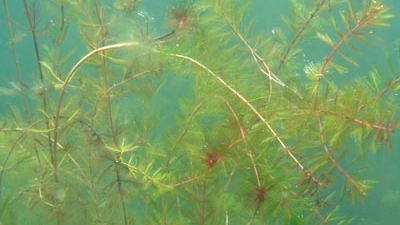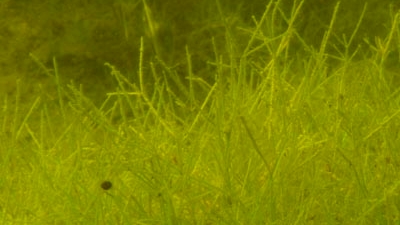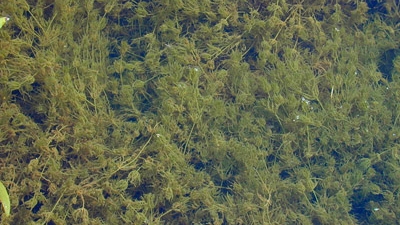floating
- Spatterdock / Yellow Water Lily Nuphar spp. Read More
Spatterdock is a rooted plant with floating leaves supported by a stem. The leaves are heart shaped and grow 4 to 10 inches wide. The leaves have a notch wide rounded lobes and are green on both upper surface and underside. The flowers are one to two inches wide and protected by rounded yellow sepals.
Help Me With This
View Products
- White Water Lily Nymphaea odorata Read More
White Water Lily is a rooted plant with floating leaves supported by a stem. The leaves are round and grow 4 to 12 inches in diameter. The leaves have a narrow notch, are green on the upper surface, and the underside is usually red to purple. The flowers are white to magenta and very fragrant. The flowers are 2 to 8 inches in diameter and close during the night and reopen each morning. These plants provide essential habitat to many aquatic organisms and are great attractors of pollinators.
Help Me With This
View Products
- Duckweed Lemna spp. Read More
Duckweed is a very small floating plant with hair like roots that hang down into the water. A single plant can have a group of two to five leaves. The leaves are about three millimeters in diameter and are usually nearly flat.
Help Me With This
View Products
- Watermeal Wolffia spp. Read More
Watermeal is a tiny free floating plant without roots of any type. These plants float on or just below the water surface. They are singular, oval shaped leaves with a slightly rounded surface. The largest watermeal plants measure only one millimeter long, slightly larger than a grain of sand.
Help Me With This
View Products
- Blue-Green Algae Cyanobacteria Read More
Cyanobacteria are unicellular organisms that use phycocyanin to perform photosynthesis and are usually blue-green in color. They can form large blooms in the water that look like teal paint in the water. Some species of cyanobacteria can produce toxins that are harmful to other wildlife, pets, and humans.
Help Me With This
View Products
- Green Algae Chlorophyta spp. Read More
Green algae are unicellular organisms that use chlorophyll to perform photosynthesis and appear green. These organisms can look like green paint in the water, scum, or filaments. Although they are unicellular, green algae can form thick, dense mats on the surface of your waterbody. They are the primary producers in the water and are necessary for a healthy ecosystem, but can quickly grow to nuisance levels.
Help Me With This
View Products
shoreline
- Purple Loosestrife Lyhtrum salicaria Read More
Purple Loosestrife is an invasive plant that is mistakenly utilized because of its brilliant magenta flowers. This emergent has four sided stems that grow up to 5 feet tall with many branches. Leaves grow in pairs on opposite sides of the stem or as equally spaced triplets. The flowers are purple to magenta and grow on spikes that are 4 to 15 inches long. These invasive plants should be pulled from the ground, including roots, and put into a bag. Let the plants die in the bag then burn them completely.
Help Me With This
View Products
- Common Reed Phragmites australis Read More
Commonly called Phragmites [
frag-mite-eez], this invasive emergent plant can form large colonies that dominate the ecosystem. The stems are round and can grow over 15 feet tall. The leaves are flat, one to two inches wide, and grow in an alternating pattern up the stem. The head of these plants resembles a feathery plume with many tiny seeds.
Help Me With This
View Products
- Cattails Typhaceae spp Read More
Cattails are large, reedlike emergent plants that can grow more than 6 feet tall. They have overlapping, unbranched blades that are all the same height and originate from a single base. Cattails are easily recognized by the fuzzy brown spike atop the plant. The native Common Cattail has blades close to one inch wide. The invasive Narrow Leaved Cattail has blades less than one half inch wide.
Help Me With This
View Products
- Bulrush Scirpus spp. Read More
Bulrush is a family of emergent plants that can grow up to 4 feet tall. They have long, singular stems that have round or triangular cross-sections. There are no leaves or blades branching from the stems. Bulrush plants have tiny flowers that usually look like bristles at the tip of the plant. These plants provide excellent cover for small fish.
Help Me With This
View Products
- Arrow Arum Peltandra virginica Read More
Arrow Arum is an emergent plant grows up to 2 feet tall. It has oblong to triangular leaves that measure 4 to 12 inches long and 3 to 6 inches wide at flowering. Later in the summer, the leaves can grow to 30 inches long. The tiny flowers range from white to orange and grow on a fleshy spike protected by a leave-like structure. These plants are great attractors of pollinators and provide nutrient uptake, shoreline stabilization, and erosion control.
Help Me With This
View Products
- Pickerelweed Pontederia cordata Read More
Pickerelweed is an emergent plant grows up to 2 feet tall. It has lance-shaped or oval leaves that are 2 to 8 inches long. The flowers are blue to purple in color and grow on spikes 2 to 6 inches tall. These plants are great attractors of pollinators and provide nutrient uptake, shoreline stabilization, and erosion control.
Help Me With This
View Products
underwater
- Bottom Organics & Muck Read More
Time goes by and the pond gathers layers of organic material on the bottom, such as leaves, grass clippings, branches, dying algae and plants, and other runoff from the surrounding area. This material all decays and begins to draw oxygen out of the water while it settles on the bottom. The more materials at the bottom, the more oxygen it uses. By adding natural bacteria to the waterbody you can reduce odors, add clarity, reduce nutrient load and degrade the organics that draw the oxygen away.
Help Me With This
View Products
- Hydrilla Hydrilla verticillata Read More
Hydrilla is an extremely invasive plant that is threatening to move into Michigan waters. It is vital that you learn to identify this plant and actively look for it when you’re on the water.
Hydrilla is a vascular plant with true roots. The stems are slender with numerous branches and can grow up to 25 feet long. This growing pattern allows Hydrilla to form thick, dense stands that will dominate any aquatic ecosystem. The leaves are flat and pointed blades that grow in groups of four to eight that whorl around the stem. The edges of the leaves are distinctly toothed. Hydrilla can reproduce through fragmentation or sexual reproduction.
Help Me With This
View Products
- Fanwort Cabomba caroliniana Read More
Fanwort / Cabomba is an invasive plant and should be treated aggressively. The stems are very thin and branched and can grow up to six feet long. The leaves branch off opposite sides of the stem. The leaves have many thin, branching leaflets that form a fan shape. This plant is often misidentified as a milfoil or thin leaf pondweed.
Help Me With This
View Products
- Eelgrass / Tapegrass / Wild Celery Vallisneria Americana Read More
Eelgrass is a vascular plant with true roots. This plant does not have a stem, but leaves that grow directly from the root crown. The leaves are long, flat, and ribbon like that grow up to three feet long and only about one centimeter wide. These plants start growing at warm water temperatures, so you may not see them until late July. They can be mechanically removed or treated with an herbicide.
Help Me With This
View Products
- Curly Pondweed Potamogeton crispus Read More
Curly Pondweed is the only invasive pondweed. It is a vascular plant with true roots. The stems are about two millimeters thick and can grow up to 36 inches or longer. The leaves are all underwater and are oblong, coming to a point at the tip. The leaves are usually two to three inches long and one centimeter wide. The main identifying characteristic of Curly Pondweed is the wavy-crisped leaf edges. This plant grows very early in the season, usually dominates the ecosystem, and recedes by late-June. It is easily treated with an herbicide.
Help Me With This
View Products
- Floating Leaf Pondweeds Potamogeton natans Read More
This is a group of pondweeds with primarily floating leaves. Some of the other pondweeds may have some floating leaves, but this group is plants that have very few underwater leaves. Species included are Floating, Longleaf, Oakes’, and American.
Help Me With This
View Products
- Thin Leaf Pondweeds Potamogeton zosteriformes Read More
This is a group of pondweeds with very slender stems and leaves. In most cases, the stems and stalks are no larger than two millimeters thick. Stems and leaves vary in pattern. Species included are Alga, Threadleaf, Hill’s, Bluntleaf, Sago, Fries’, Fern, Bigsheath, Flatstem, and Vasey’s.
Help Me With This
View Products
- Naiads Najas spp. Read More
Naiads are vascular plants with true roots. The stems are wavy with slender branches. The leaves are simple and may be opposite of whorled. The main identifying characteristics is that Naiad leaves have toothed edges. These plants are commonly misidentified as pondweeds or elodea.
Help Me With This
View Products
- Elodea / Common Water Weed Elodea canadensis Read More
Elodea is a vascular plant with true roots. The stems are round in cross section, branched, and can grow up to 3 feet long. The leaves are green and firm. On the lower portion of the stem, the leaves are paired and on opposite sides of the stem. Upper leaves are in groups of 3, whorled around the stem. These plants are commonly misidentified as pondweeds or naiads.
Help Me With This
View Products
- Bladderwort Utricularia vulgaris Read More
Bladderwort is a vascular plant without true roots. The plants anchor to the substrate with modified leaf structures. The stems branch and have leaves on alternate sides up to 2 inches long. The main identifying characteristic is the presence of small bladders on the leaves. These bladders are flat and green, then inflated, and turn black late in the year. This plant is commonly misidentified as a milfoil, pondweed, or fanwort.
Help Me With This
View Products
- Coontail Ceratophyllum demersum Read More
Coontail is a vascular plant without true roots. The plants anchor to the substrate with modified leaf structures. Groups of more than 4 leaves are whorled around the stem and are crowded at the end of the stems. The leaves are stiff and forked 1 to 2 times. This plant can easily be misidentified as Chara or a milfoil.
Help Me With This
View Products
- Northern Watermilfoil Myriophyllum sibiricum Read More
Northern Watermilfoil has many similar properties as Eurasian Watermilfoil, but Northern is one of the native species of milfoil. The leaves of Northern usually have only 5 to 10 leaflets on each side of the midrib. The spacing between leaf whorls on the stem is greatly reduced compared to Eurasian. Because of variation between plants and hybridization with other milfoils, proper identification of this plant can be difficult and may require genetic testing.
Help Me With This
View Products
- Eurasian Watermilfoil Myriophyllum spicatum Read More
Eurasian Watermilfoil is a vascular plant with true roots. The stems rounded with some branching. Groups of 3 or 4 leaves are whorled around the stem with spacing up to two inches between groups. Each leaf has up to 20 leaflets per side. This plant is extremely invasive because it can spread by fragmentation and sexual reproduction. Eurasian Watermilfoil should be treated with an herbicide early in the season. Because of variation between plants and hybridization with other milfoils, proper identification of this plant can be difficult and may require genetic testing.
Help Me With This
View Products
- Starry Stonewort Nitellopsis obtusa Read More
Starry Stonewort is a multicellular algae that has many of the same characteristics of Chara (see above). Starry Stonewort is an invasive algae that can become a nuisance much more quickly than Chara. Starry Stonewort can colonize deeper waters and form thicker mats that often reach the water surface, impeding navigation and recreation.
Help Me With This
View Products
- Chara / Muskgrass Characeae spp. Read More
Chara is a multicellular algae that resembles a vascular plant because of its stem like and leaf like structures. Chara can form thick, dense mats on the bottom of your waterbody. It does not have roots, but its branches grow into the sediment to form a loose connection between the colony and the bottom substrate. Chara provides essential food and habitat to other aquatic organisms. It is an efficient filter and greatly improves water quality. However, Chara can grow to a nuisance level quickly and can be tamed with algicides or mechanical removal.
Help Me With This
View Products
